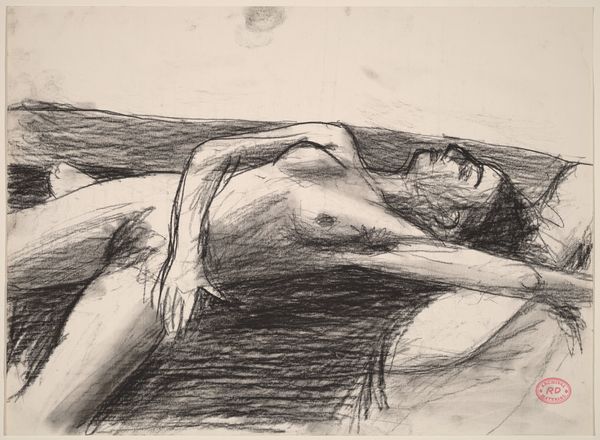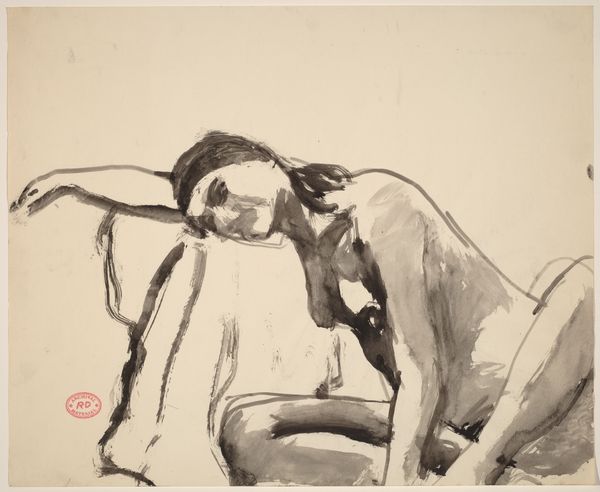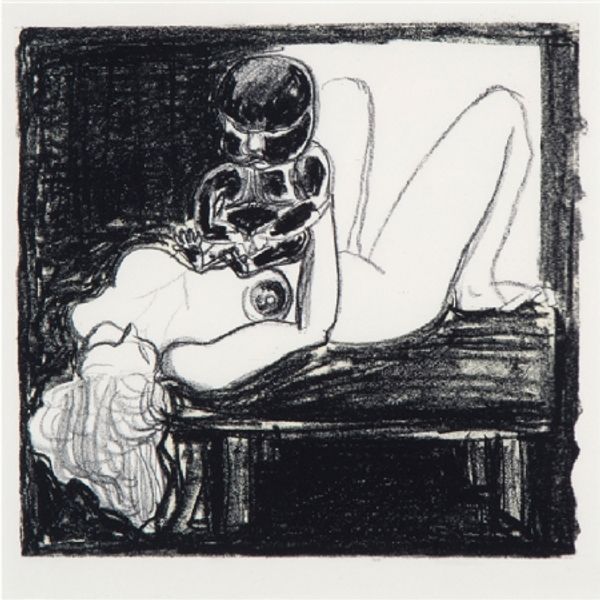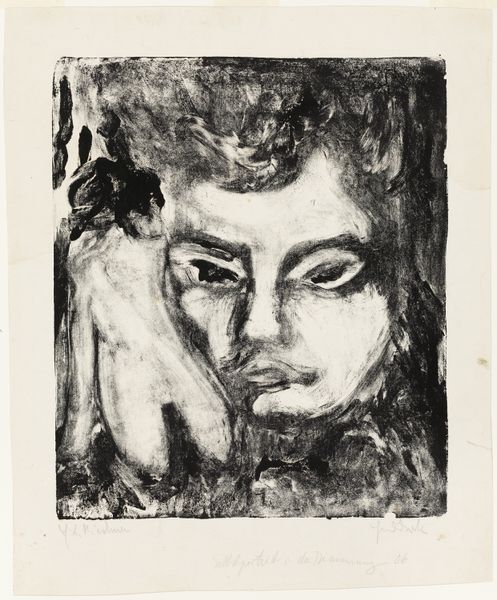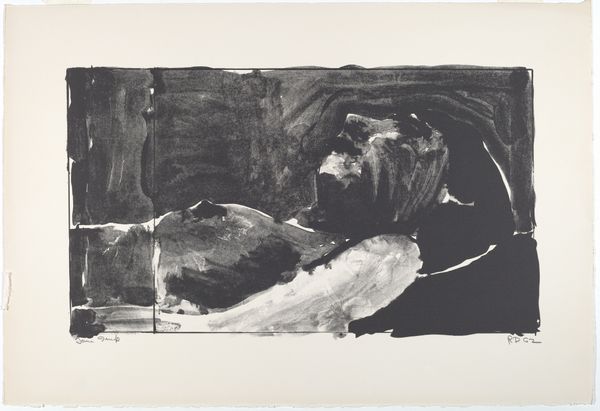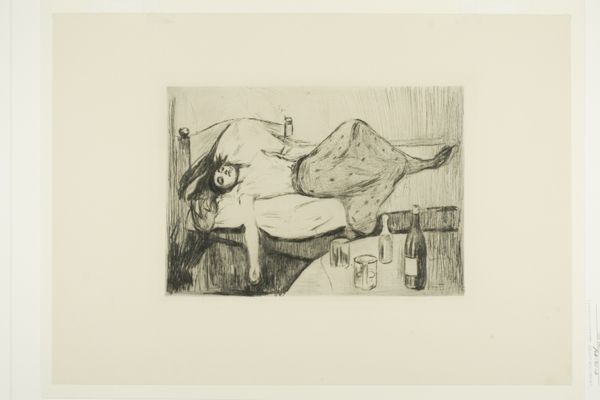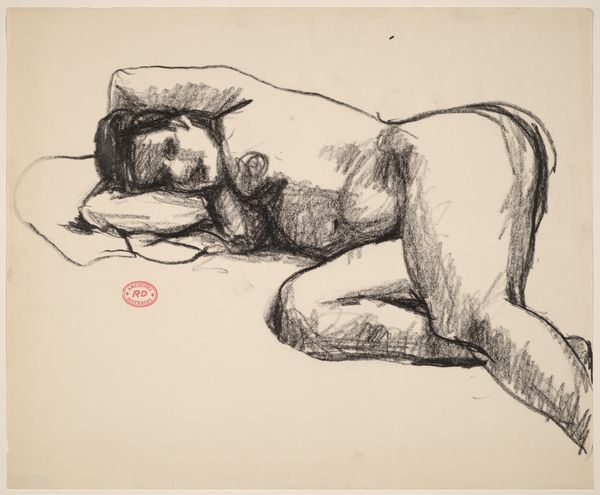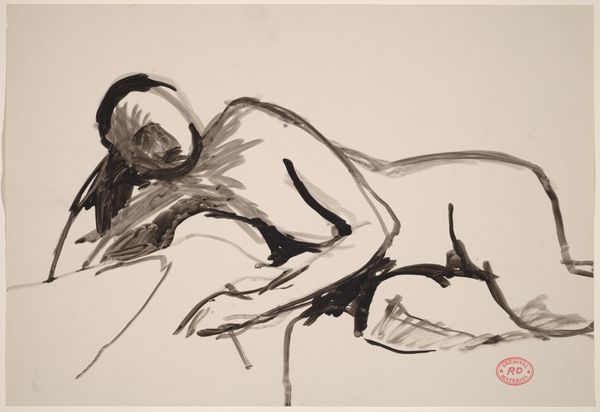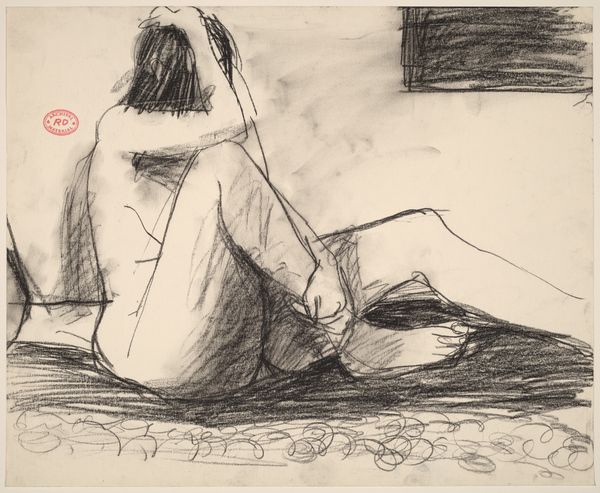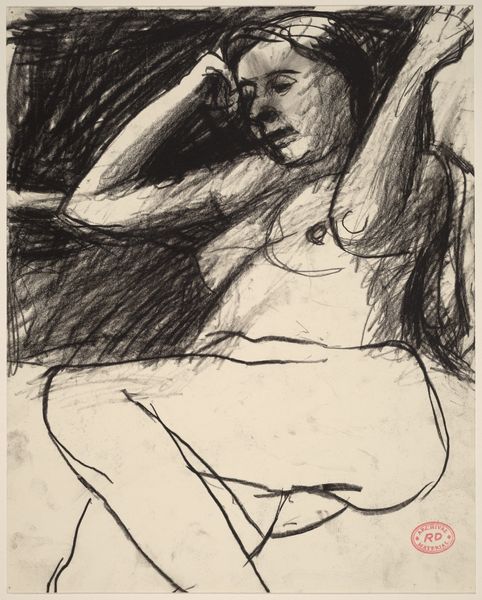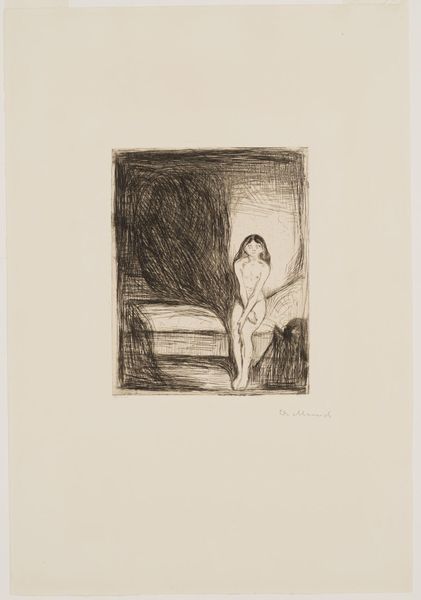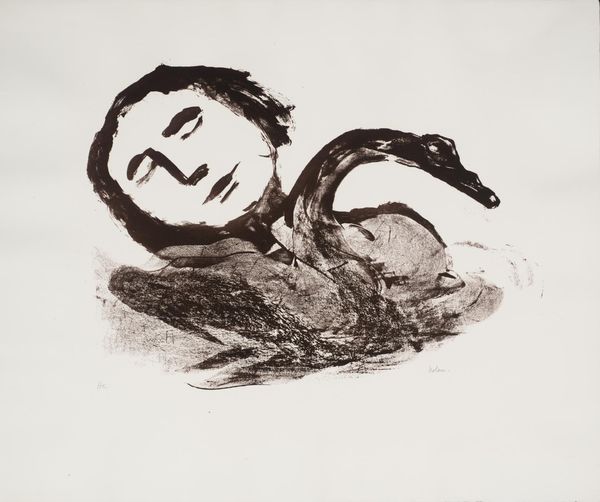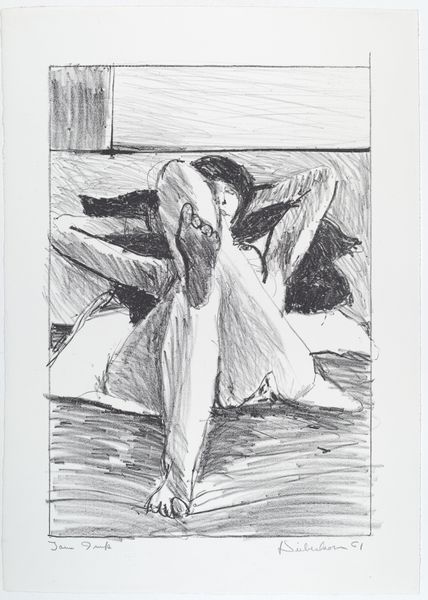
drawing, print, paper, monoprint, ink, graphite
portrait
abstract-expressionism
drawing
paper
bay-area-figurative-movement
monoprint
ink
pencil drawing
graphite
nude
modernism
Dimensions: image: 33.8 x 33 cm (13 5/16 x 13 in.) sheet: 38.2 x 47.1 cm (15 1/16 x 18 9/16 in.)
Copyright: National Gallery of Art: CC0 1.0
Editor: Richard Diebenkorn's 1962 monoprint "Sleeping Girl" renders a nude figure in deep repose, primarily in graphite and ink on paper. I'm struck by the raw quality of the mark-making; you can really sense the artist's hand and the directness of the process. How does this materiality shape our understanding of the piece? Curator: The choice of monoprint is key. This wasn’t about mass production, but about a unique, almost ephemeral trace. It points us to the labor involved, the pressure, the pulling of ink, revealing process as intrinsic to the image. The texture, isn’t it interesting how it challenges any easy notion of idealized beauty? Editor: It really does! There's nothing refined or idealized here, only this physicality you're talking about. Does that have implications beyond just aesthetics? Curator: Absolutely. Diebenkorn worked during a time of shifting social values and the questioning of traditional representation. By emphasizing the material act of creation and rejecting smooth perfection, this monoprint could be seen as a subtle commentary on the commodification of the body and the art market. He is not producing another object of desire. Editor: So, the inherent nature of the printmaking itself rejects that notion of "high art" in favor of highlighting the working class labour? Curator: Precisely! The choice of monoprint subverts notions of luxury, drawing our attention instead to the grit and toil of its making. What do you make of the darkness surrounding the figure? Editor: I'm seeing that as related, this suppression into the background that is only made visible through the materials used to represent her, but there is so much negative space still in the image... Is this just an effect of the printing process or something more intentional? Curator: Could it symbolize the limitations and repressions placed on women's bodies at the time? What does this materiality "do," so to speak, in conversation with cultural concerns? Editor: This has definitely given me a fresh perspective on how material choices can carry social meaning. The imperfections become incredibly expressive. Curator: Yes, we’re not just seeing a sleeping figure, we are engaging with a material record of social making, one that has made me appreciate it even more.
Comments
No comments
Be the first to comment and join the conversation on the ultimate creative platform.
